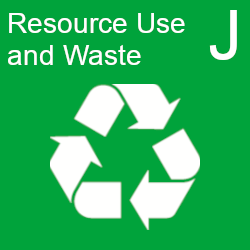Notice: From 01 December 2025, the Outcome Indicator Framework dashboard has been moved. Future updates to this publication are available on GOV.UK at: Environmental Indicator Framework.
Short Description
This indicator shows trends in the amount of (a) raw material consumption per capita and (b) the amount of gross value added per unit of raw material consumption. These measures give a proxy for the scale of our environmental impact associated with our material consumption, while helping identify how efficiently natural resources are being used and the extent to which economic output is being decoupled from consumption of materials.
Readiness and links to data
Data on raw material consumption underpinning each metric are available in the England’s material footprint release. Data on Nominal and real regional gross value added (balance) by industry and Estimates of the population for the UK, England and Wales, Scotland and Northern Ireland are published by the Office for National Statistics.
Indicator components
Figure J2a: Raw material consumption (excluding fossil fuels) per capita in England, 2001 to 2021
Table J2a: Raw material consumption (excluding fossil fuels) per capita in England, 2001 to 2021
| Year | Biomass | Metal ores | Non-metallic mineral materials | Total |
|---|---|---|---|---|
| 2001 | 4.81 | 1.09 | 8.64 | 14.54 |
| 2002 | 5.37 | 1.23 | 9.92 | 16.53 |
| 2003 | 5.11 | 1.10 | 11.22 | 17.43 |
| 2004 | 6.02 | 1.43 | 11.52 | 18.97 |
| 2005 | 5.81 | 1.38 | 11.01 | 18.20 |
| 2006 | 5.28 | 1.31 | 10.71 | 17.31 |
| 2007 | 5.10 | 1.28 | 10.61 | 16.99 |
| 2008 | 4.73 | 1.12 | 8.82 | 14.67 |
| 2009 | 4.46 | 0.98 | 6.71 | 12.15 |
| 2010 | 4.31 | 0.99 | 6.61 | 11.91 |
| 2011 | 4.26 | 1.02 | 7.42 | 12.69 |
| 2012 | 4.47 | 1.12 | 7.40 | 12.99 |
| 2013 | 4.28 | 1.21 | 6.40 | 11.89 |
| 2014 | 4.65 | 1.18 | 8.37 | 14.20 |
| 2015 | 4.49 | 1.09 | 9.21 | 14.80 |
| 2016 | 4.27 | 0.92 | 6.53 | 11.72 |
| 2017 | 4.10 | 0.93 | 6.54 | 11.58 |
| 2018 | 4.18 | 1.00 | 8.55 | 13.73 |
| 2019 | 4.32 | 1.01 | 8.29 | 13.62 |
| 2020 | 3.85 | 0.89 | 7.65 | 12.39 |
| 2021 | 4.40 | 1.06 | 8.81 | 14.27 |
Trend description for J2a
The average raw material footprint per capita in England (excluding fossil fuels) fell by 1.9% (0.27 tonnes per capita) between 2001 and 2021. Levels peaked in 2004, decreased steadily until 2007, and then fell sharply during the 2008 to 2010 recession. It fluctuated around this level until 2017. Over the latest three years for which data are available (2019 to 2021), levels decreased from 13.6 tonnes per capita in 2019 to 12.4 tonnes per capita in 2020, before increasing again to 14.3 tonnes per capita in 2021. Within the overall total, per capita consumption of non-metallic mineral materials increased by 2.0% (0.17 tonnes per capita) from 2001 to 2021, while per capita consumption of metal ores and biomass both decreased by 2.8% (0.03 tonnes per capita) and 8.5% (0.41 tonnes per capita) respectively over the same period.
Assessment of change
A decrease in the biomass component of England’s Material Footprint has been observed over the short-, medium- and long-term assessment periods, however it is not possible to simplistically categorise any change in biomass consumption as either an ‘improvement’ or ‘deterioration’ for the environment. England’s consumption of metal ores has decreased (an improvement) over the short-, medium- and long-term assessment periods. In the short term and medium term, consumption of non-metallic mineral ores has increased (a deterioration), and in the long-term assessment period consumption has decreased (an improvement).
Change since 2018 has also been assessed. Since 2018, there has been little or no change in the biomass component of England's Material Footprint, a decrease (improvement) of the metal ores component, and an increase (deterioration) of the non-metallic mineral ores component. This is based on 4 data points and should be considered as indicative and not evidence of a clear trend.
Further information on this assessment, along with details on the methodology, is provided in the Assessment background page. Summaries by 25 Year Environment Plan goal and information on indicator links are presented in the Assessment results pages.
Table J2a: Assessment of change
| Component | Subcomponent | Period | Date range | Percentage change | Smoothing function | Assessment of change |
|---|---|---|---|---|---|---|
| J2a | Biomass | Short term | 2016 to 2021 | -3.92 | Loess | Change (decreasing) |
| J2a | Biomass | Medium term | 2011 to 2021 | -4.51 | Loess | Change (decreasing) |
| J2a | Biomass | Long term | 2001 to 2021 | -18.00 | Loess | Change (decreasing) |
| J2a | Metal ores | Short term | 2016 to 2021 | -7.17 | Loess | Improvement |
| J2a | Metal ores | Medium term | 2011 to 2021 | -8.49 | Loess | Improvement |
| J2a | Metal ores | Long term | 2001 to 2021 | -14.06 | Loess | Improvement |
| J2a | Non-metallic mineral materials | Short term | 2016 to 2021 | 9.69 | Loess | Deterioration |
| J2a | Non-metallic mineral materials | Medium term | 2011 to 2021 | 20.35 | Loess | Deterioration |
| J2a | Non-metallic mineral materials | Long term | 2001 to 2021 | -10.35 | Loess | Improvement |
Note that assessment categories were assigned based on smoothed data, so percentage change figures in Table J2a may differ from unsmoothed values quoted elsewhere. Percentage change refers to the difference seen between the first and last years in the specified date range. It is not possible to define a simplistic desired direction of change for the biomass component of this indicator so we cannot assign ‘improvement’ or ‘deterioration’ label to these results.
Figure J2b: Gross value added per kg of raw material consumption (excluding fossil fuels) in England, 2001 to 2021
Table J2b: Gross value added per kg of raw material consumption (excluding fossil fuels) in England, 2001 to 2021
| Year | Value |
|---|---|
| 2001 | 1.71 |
| 2002 | 1.52 |
| 2003 | 1.48 |
| 2004 | 1.39 |
| 2005 | 1.48 |
| 2006 | 1.59 |
| 2007 | 1.65 |
| 2008 | 1.90 |
| 2009 | 2.18 |
| 2010 | 2.26 |
| 2011 | 2.14 |
| 2012 | 2.12 |
| 2013 | 2.35 |
| 2014 | 2.01 |
| 2015 | 1.96 |
| 2016 | 2.50 |
| 2017 | 2.58 |
| 2018 | 2.20 |
| 2019 | 2.24 |
| 2020 | 2.22 |
| 2021 | 2.09 |
Trend description for J2b
In 2021, England generated approximately 22.3% more economic value than in 2001 (measured by gross value added per unit of raw material consumption (excluding fossil fuels), also described as resource productivity). Resource productivity measured on this basis rose from a low of £1.39 of gross value added per kg of raw material consumption in 2004 to a peak of £2.35 in 2013. It then declined to £1.96 in 2015 before rising to a new high of £2.58 in 2017. It has since declined to £2.09 in 2021.
Assessment of change
Gross value added per kg of raw material consumption (excluding fossil fuels) in England has been assessed to show a 'deterioration' over the short term. In the medium term, the value showed 'little or no change', and in the long term the value was 'improving'. Progress has slowed over the last 5 years.
Change since 2018 has also been assessed. There has been an increase (improvement) in gross value added per kg of raw material consumption. However, this is based on 4 years of data so should be considered as indicative and not evidence of a clear trend.
Further information on this assessment, along with details on the methodology, is provided in the Assessment background page. Summaries by 25 Year Environment Plan goal and information on indicator links are presented in the Assessment results pages.
Table J2b: Assessment of change
| Component | Period | Date range | Percentage change | Smoothing function | Assessment of change |
|---|---|---|---|---|---|
| J2b | Short term | 2016 to 2021 | -5.42 | Loess | Deterioration |
| J2b | Medium term | 2011 to 2021 | -1.85 | Loess | Little or no change |
| J2b | Long term | 2001 to 2021 | 34.78 | Loess | Improvement |
Note that assessment categories were assigned based on smoothed data, so percentage change figures in Table J2b may differ from unsmoothed values quoted elsewhere. Percent change refers to the difference seen between the first and last years in the specified date range.

